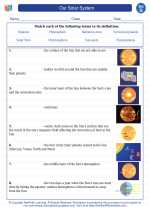Our Solar System -> terrestrial planets
Terrestrial Planets
Terrestrial planets, also known as rocky planets, are a group of planets in our solar system that are similar in structure to Earth. The four terrestrial planets are Mercury, Venus, Earth, and Mars. These planets are characterized by their solid, rocky surfaces and relatively high densities compared to the gas giants, which are the other type of planets in the solar system.
Characteristics of Terrestrial Planets:
- Rocky Surface: Terrestrial planets have solid surfaces made up of rock or metal. This gives them a more defined and solid structure compared to the gas giants.
- High Density: These planets have higher densities compared to the gas giants, indicating a larger proportion of heavy elements such as iron and nickel.
- Thin or Nonexistent Atmospheres: The atmospheres of terrestrial planets are generally thinner and composed of heavier gases compared to the gas giants. For example, Venus has a thick, toxic atmosphere, while Mars has a very thin atmosphere.
- Close to the Sun: Terrestrial planets are located closer to the sun compared to the gas giants, resulting in higher temperatures and shorter orbital periods.
- Smaller Size: Terrestrial planets are smaller in size compared to the gas giants. Their diameters are generally less than 13,000 kilometers.
Comparative Study of Terrestrial Planets:
Let's take a closer look at each of the terrestrial planets:
| Planet | Diameter (km) | Distance from Sun (million km) | Atmosphere Composition |
|---|---|---|---|
| Mercury | 4,880 | 57.9 | Very thin exosphere |
| Venus | 12,104 | 108.2 | Carbon dioxide (96%) and nitrogen (3.5%) |
| Earth | 12,742 | 149.6 | Nitrogen (78%), oxygen (21%), argon (0.9%) |
| Mars | 6,779 | 227.9 | Carbon dioxide (95.3%), nitrogen (2.7%), argon (1.6%) |
Studying the terrestrial planets provides valuable insights into the formation and evolution of rocky bodies in our solar system and beyond. Understanding the similarities and differences among these planets helps scientists unravel the processes that shaped our own planet and the potential for habitability on other rocky worlds.
[Terrestrial Planets] Related Worksheets and Study Guides:
.◂Science Worksheets and Study Guides Seventh Grade. Our Solar System

 Activity Lesson
Activity Lesson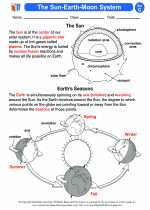
 Activity Lesson
Activity Lesson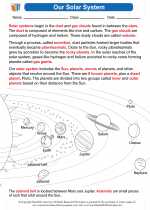
 Worksheet/Answer key
Worksheet/Answer key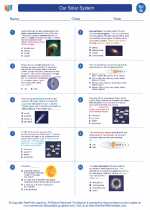
 Worksheet/Answer key
Worksheet/Answer key
 Worksheet/Answer key
Worksheet/Answer key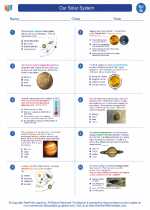
 Worksheet/Answer key
Worksheet/Answer key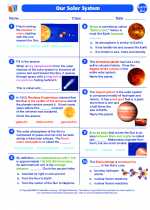
 Vocabulary/Answer key
Vocabulary/Answer key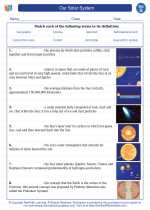
 Vocabulary/Answer key
Vocabulary/Answer key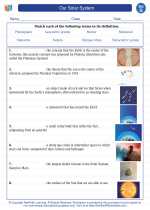
 Vocabulary/Answer key
Vocabulary/Answer key